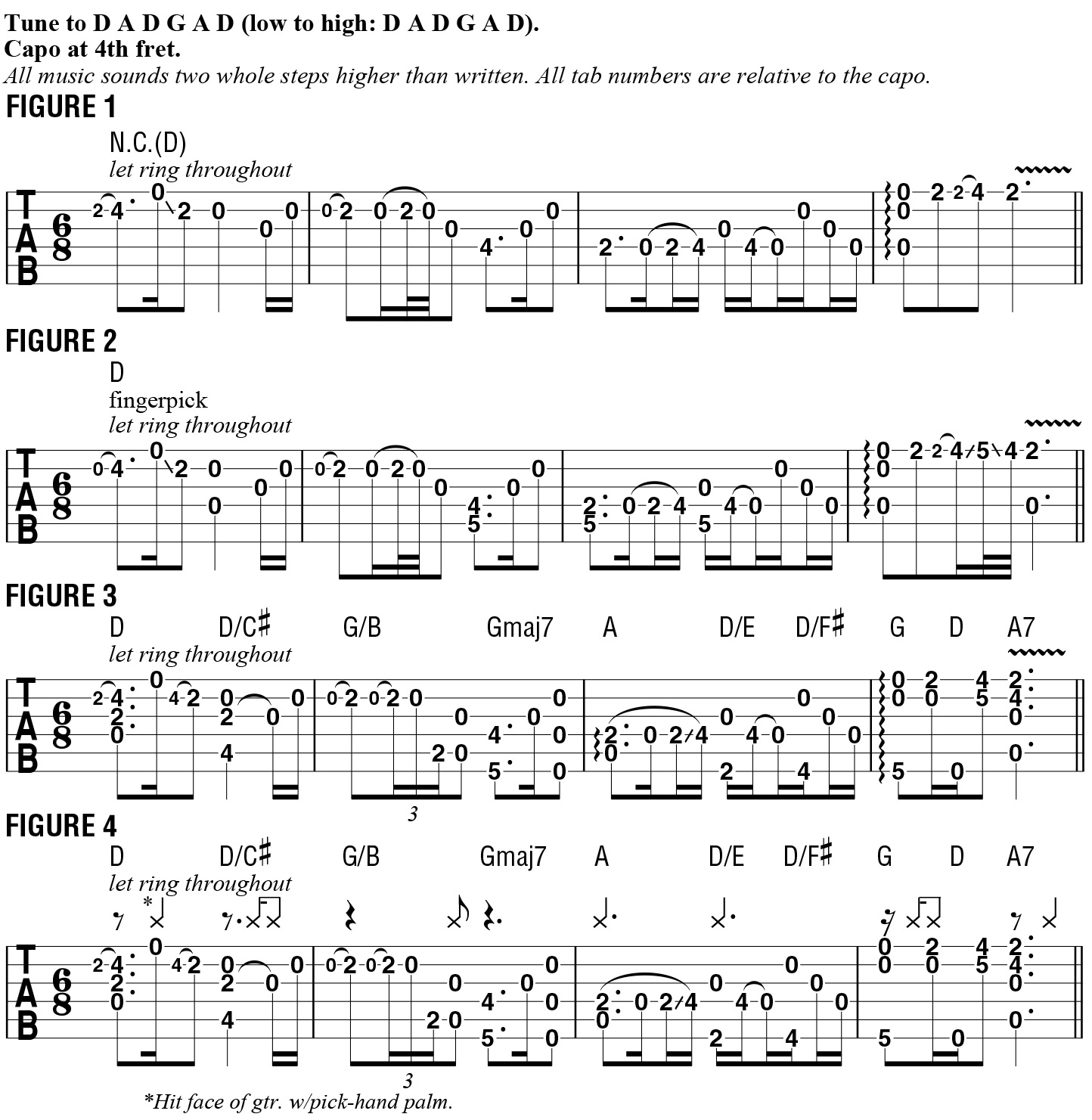Mike Dawes: The Influence of Celtic Music on My Acoustic Playing
In this column, I’d like to present some specific, intricate rhythmic ideas, as presented in a composition of mine called “Fortress” (hear it below), featured on my latest release, Era. I wrote this piece while living in Northern Ireland, and it’s very much inspired by the music of that country, as well as its landscape and people, and the political climate that was present there in the Seventies.
“Fortress” is essentially a slow Celtic ballad in 6/8 meter, with a waltz-like vibe. Underneath the fingerpicked chordal and melodic elements is a “kick drum” pattern that I perform by slapping my pick-hand palm against the face of the guitar. The percussive pattern of this palm accent is a bit odd, as, in isolation, it’s played in a rhythm of 7/8, while the fingerpicked pattern is performed in a 6/8 meter. The odd juxtaposition of rhythms is intended to compositionally imply an air of unrest, akin to that for which the region is known.
Let’s first address the melodic elements of the piece. First, my guitar is once again in DADGAD tuning (low to high, D A D G A D), and I’m using a capo at the fourth fret. All notes and chords sound two whole steps higher than written, with the instrument thought of in “transposing” terms, meaning that while the open sixth string actually sounds a concert-pitch F# note, we will think of it as D, as if we weren’t using a capo.
The most effective way to learn this part is to first focus on the strict single-note melody, and then bring in the lower notes that serve to indicate the harmony, or chordal references. Unlike some of my other compositions that incorporate the use of polyrhythms that eventually sync up, that’s not the case here, as the melodic lines are presented in differing rhythmic contexts four times while the “kick drum” pattern continues throughout. This makes the part somewhat difficult to learn, but it’s a great exercise in thinking about one time signature, in this case 6/8, while muscle memory will take care of the other, 7/8.

In FIGURE 1, I present the melodic line as it is performed the first time through: notice the incorporation of hammer-ons and pull-offs, which serve to emulate the sound of Celtic instruments and Celtic music overall. In FIGURE 2, I introduce a low D bass note into the pattern in order to lay down the harmonic backdrop of the home key of D (concert pitch F#). This steady root note fortifies the Celtic feel in way that brings to mind bagpipes, which always feature a steady drone note accompanying with the melody.
Now, in FIGURE 3, I’ve added some harmonizing to the melodic lines, which serves to add depth to the harmony while also creating a more substantial melodic statement and changing some of the bass notes under the melody. With these new bass notes, a chord progression is alluded to that adds even more depth to the composition. Work in these new bass notes and melodic harmony notes carefully, so that they will fall on the appropriate beats with precision.
Once you have this figure down, it’s time to bring in the percussive kick drum pattern, illustrated in FIGURE 4: In bar 1, the accents fall on the second eighth note of beat one and the 16th-note upbeat of the fifth eighth note in the bar, as well as the downbeat of the final eighth note. As you play through the remaining four bars, you’ll see that these kick drum accents shift continually to different places in the bar. I recommend that you slowly and diligently add these accents as you play through the four-bar example.
Get The Pick Newsletter
All the latest guitar news, interviews, lessons, reviews, deals and more, direct to your inbox!
“There are so many sounds to be discovered when you get away from using a pick”: Jared James Nichols shows you how to add “snap, crackle and pop” to your playing with banjo rolls and string snaps
Don't let chord inversions bamboozle you. It's simply the case of shuffling the notes around







![Joe Bonamassa [left] wears a deep blue suit and polka-dotted shirt and plays his green refin Strat; the late Irish blues legend Rory Gallagher [right] screams and inflicts some punishment on his heavily worn number one Stratocaster.](https://cdn.mos.cms.futurecdn.net/cw28h7UBcTVfTLs7p7eiLe.jpg)


